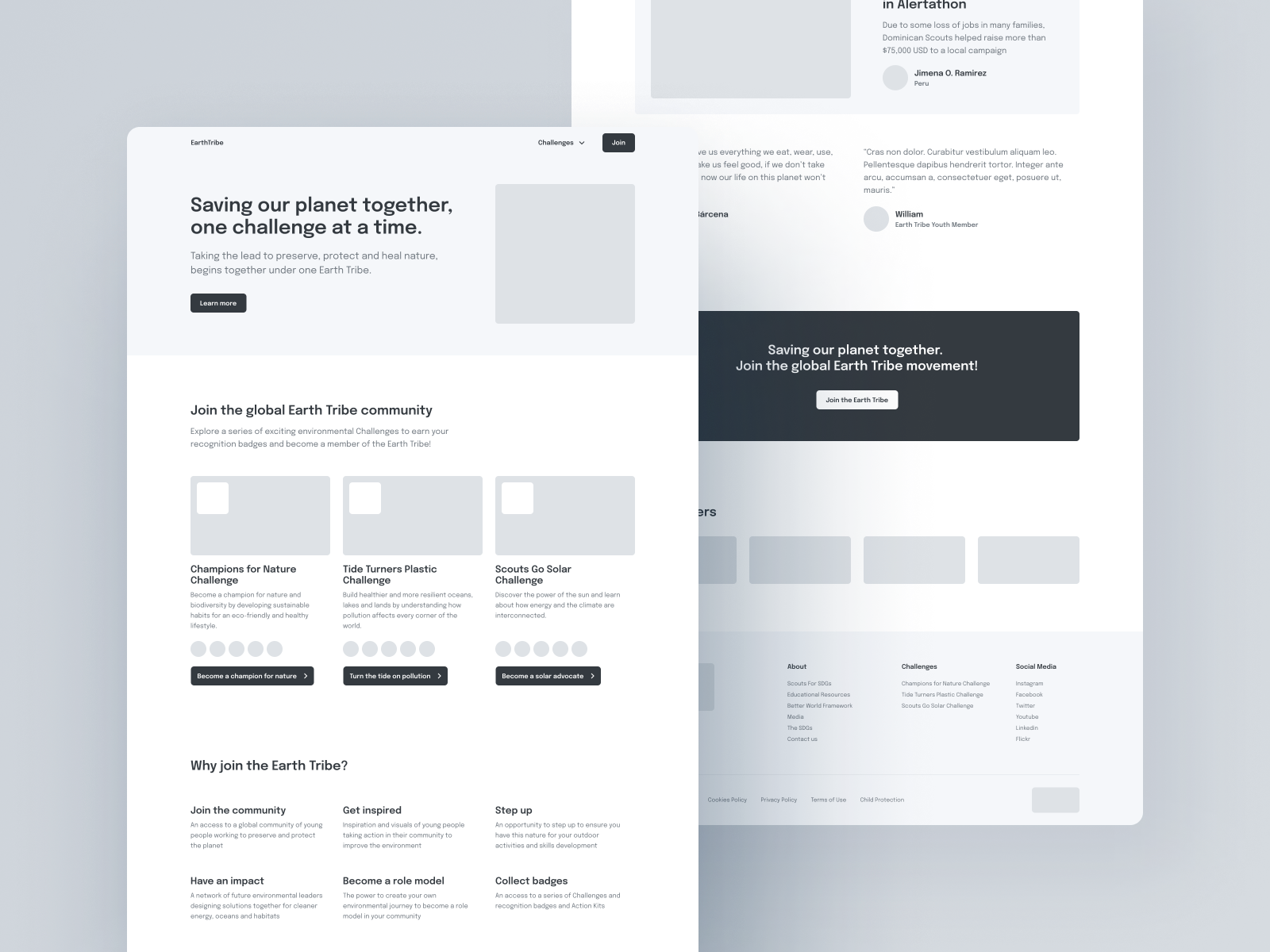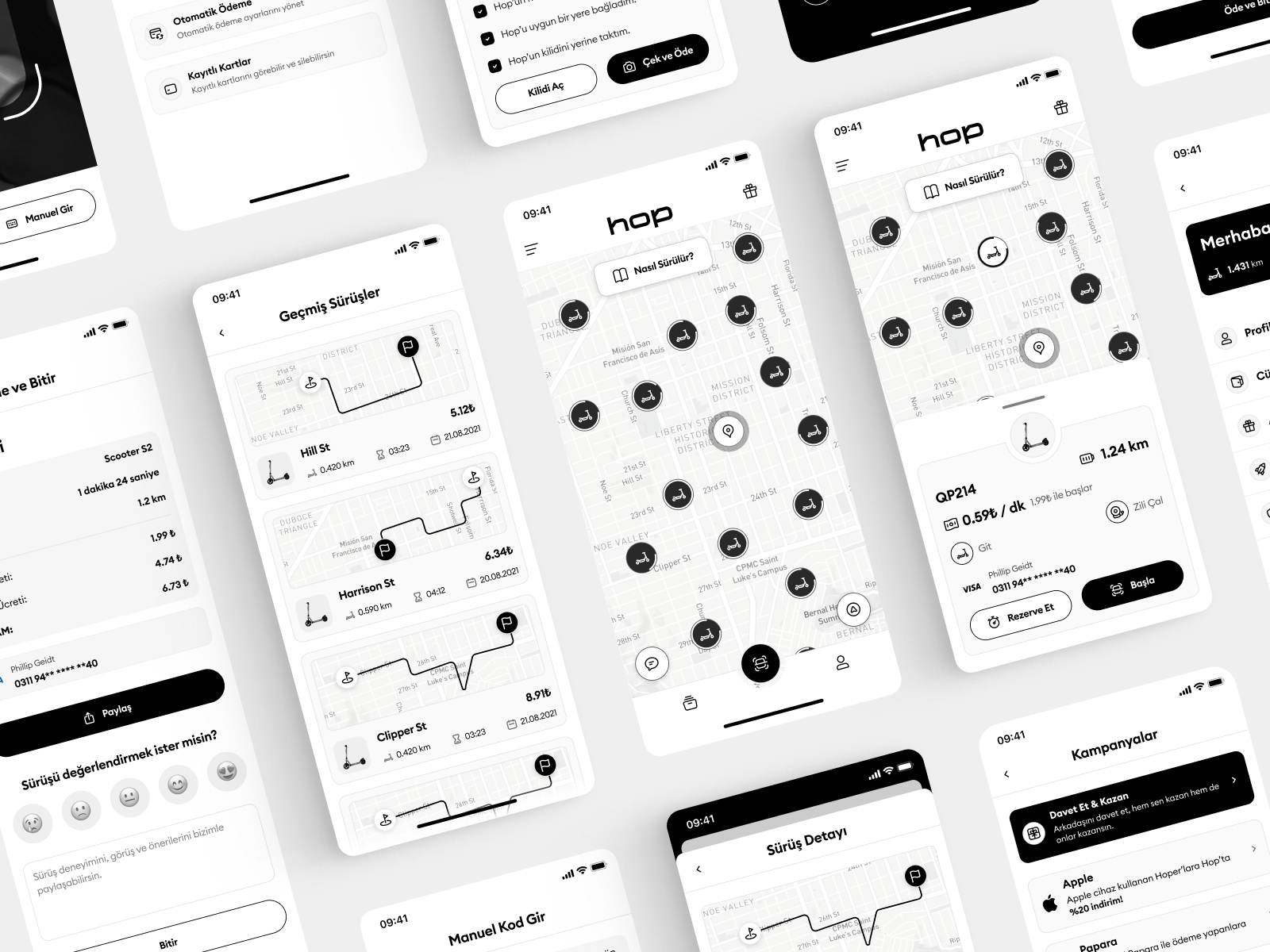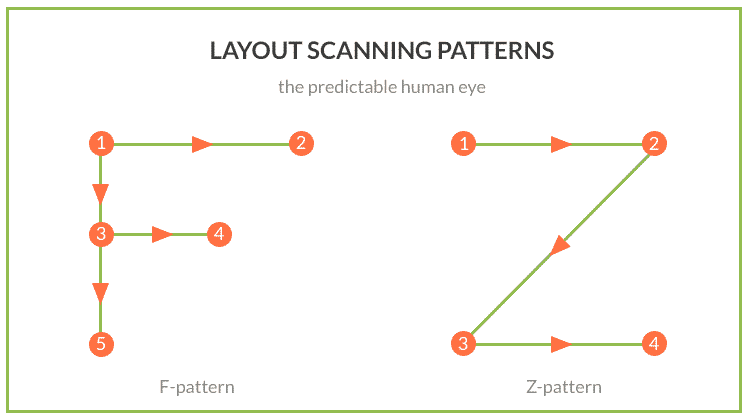Fidelity is a level of realism that your design has. Low-fidelity wireframes resemble only essential characteristics of the future design; they can be used to communicate ideas inside the product team. But low-fidelity wireframes can look too abstract for people who aren't a part of the product team. That's why as soon as the team needs to communicate a design to external people, they need to increase the level of fidelity and move to mid- or high-fidelity design.
A high-fidelity wireframe is the most realistic version of the wireframe you can create. When product teams create high-fidelity wireframes, they use the dimensions of the actual device that will display the screen/page. For instance, if you design a mobile app for iOS, you will use the iPhone 14 Pro frame with dimensions of 393 x 852 points. All UI elements in high-fidelity wireframes have real dimensions (height and width).
High-fidelity wireframes created using real or realistic texts. If you don’t have actual texts, you should either write them yourself or reach a content manager in your team. Don’t worry if the text you want to use is not final; you will be able to modify the text later.
Another notable thing about high-fidelity wireframes is that they use actual UI components instead of ovals or rectangles. Buttons, dropdown lists, switch toggles, and other UI components should look like real components. It will help anyone reviewing wireframes understand how a specific element will work.

High-fidelity wireframe of a landing page. Image by Adam Kalin.
There are two reasons why a team wants to create high-fidelity wireframes. First, high-fidelity wireframes can serve as design documentation. It's easy to turn the wireframes into documentation that becomes a single source of truth and helps team members to understand how the product should look and work.
Second, high-fidelity wireframes can be used to demonstrate a design to stakeholders. Low and mid-fidelity wireframes might look unfinished, and this can cause a bad impression on stakeholders. But high-fidelity wireframes look clean and will help you avoid unnecessary critique.
The difference between low-fidelity and high-fidelity wireframes. Image by Jinal Shah.
You might wonder, "But why should I show high-fidelity wireframes to stakeholders and not high-fidelity mockups?" High-fidelity wireframes will make stakeholders focus on the functionality of your design rather than the visual style you use. Stakeholders will review and critique the functionality of your product rather than your color or font selection.
High-fidelity wireframes are typically created at the later stages of the product design process. Designers create high-fidelity wireframes after they finalize the functional design but don't start the development.
Designers might want to create high-fidelity wireframes to see the screen/page with an actual copy. When product teams start to replace dummy text with real copy, they can notice that some content containers need to be redesigned because they cannot fit the actual content. The earlier the team notices that, the less expensive it will be to modify a designer.

High-fidelity wireframes of mobile screens. Image by Onur Gür.
High-fidelity wireframes are static design artifacts, and they cannot communicate interactivity in the same way as high-fidelity prototypes. And this can cause problems if you want to use wireframes to communicate complex things such as animated transitions or multi-state components (i.e., dropdown list). Most of the time, it's easier for people to see how something should work rather than read about it. So if you want to describe animated transitions, it's better to use a prototype for this purpose.
The time required to create high-fidelity wireframes is another disadvantage. Creating high-fidelity wireframes takes slightly less time than creating high-fidelity mockups. But high-fidelity mockups have more practical value—they contain real content and real imagery and are created using real styles, so they can give viewers much better ideas of what they will see in the final design.
The process of creating a high-fidelity wireframe is similar to mid-fidelity wireframes. Using a high-fidelity wireframe is always make this process easier.
What will your users want to do on this page? How does this page fit in the user flow you design? The wireframe you create should be a natural part of the user flow you design.
Think about what information users will need to achieve the goal. Since you use actual text copy, you need to ensure that it's clear and concise. Show only the information the user needs, and eliminate anything that doesn't help them.
Choose the functional elements according to the goal that the user wants to achieve.
Divide the screen into blocks. A block is a container for a content or functional element. Each block will represent either a content section, such as a text paragraph, or a functional element, such as a call to action button. You can use a layout grid to simplify arranging the blocks.
Fill the blocks with relevant elements. For high-fidelity wireframes, you need to use real or realistic text and actual components such as call-to-action buttons, dropdown menus, etc.
Think about the order in which users should see elements on the page. Keep in mind that users scan the page in F-shaped and Z-shaped patterns. Use different visual styles for elements to communicate their importance or attract the viewer's attention to a particular object.

If the page you design will be displayed on different screen sizes and resolutions, you need to ensure that your design scales well. It is true when you design a mobile app or website. It's recommended to create high-fidelity wireframes for the small screen first and then scale it to larger screens. Doing that will help you ensure that the content will scale without any problems.
Most of the time, high-fidelity wireframes will be evident to viewers. But you need to add annotations when you need to describe the behavior of components that can have multiple states (such as dropdown lists that can be in closed and open states).
Creating high-fidelity wireframes can take a lot of time, so it's better to strive to make high-fidelity wireframes reusable. You should have a design system in place that will have all the required components so that the design team can turn high-fidelity wireframes into high-fidelity mockups simply by adding imagery and applying visual styles.
Yes, it's possible to skip wireframing and start creating mockups. However, this decision can negatively impact your design process. Low and mid-fidelity wireframes are cheap and easy to make, allowing you to explore multiple design directions quickly. Low-fidelity wireframes can be created right during the brainstorming sessions, which gives you the power to pitch your design to stakeholders and other people who participate in the session. Mockups and prototypes take more time to create, and they are rarely created during brainstorming sessions, so the product team won't be able to explore as many ideas as when they practice wireframing.
Three main types of wireframes are low-fidelity, mid-fidelity, and high-fidelity wireframes. The most significant difference between the types is the level of detail that wireframes have. Low-fidelity wireframes have only a bare minimum number of details and are created without a sense of scale or pixel accuracy. Mid-fidelity wireframes have a higher level of realism that help people better envision the future state of a product. High-fidelity wireframes resemble many design elements of the final product; they give viewers a clear idea of how the future design will look and work and can serve as design documentation.
The time required to create a wireframe depends primarily on whether the wireframe is low, mid, or high fidelity, as well as how well you understand what you want to visualize. It's possible to create a low-fidelity wireframe in less than a minute, especially if you clearly know what you want to visualize. Mid-fidelity wireframes take more time to make because you have to create a more realistic version of your design. The time required to create a high-fidelity wireframe is similar to creating a high-fidelity mockup.
How good designers understand what they need to create can also impact the time required to create wireframes. The better designers know what they want to visualize, the faster they can do it.
The fidelity of your wireframes should match the fidelity of your thinking. It means that when you're in the early stages of the design process, your goal is to explore different design directions and visualize your ideas as quickly as possible. You will likely choose low-fidelity wireframes with a bare minimum of details because they are fast to create and help you communicate your design ideas to team members. As soon as you want to show your design to other people (users, stakeholders, etc.), you want to increase the level of detail your wireframes have. More detailed wireframes will help you solicit in-depth feedback about your solution.
You should invest time creating high-fidelity wireframes if you plan to use them as design documentation. The better design documentation you have, the fewer problems you will face during the implementation phase of your process. High-fidelity wireframes can become a single source of truth for your organization that will guide your product's design and development.
Another reason you should invest in creating high-fidelity wireframes is the opportunity to validate the functionality of your product with stakeholders. Wireframes will help you to avoid receiving feedback like "I don't like the color scheme" or "I think we need to use different fonts in this section" when you communicate your design to stakeholders. Instead, they will tell you whether your design helps achieve certain business objectives.
When it comes to product design, it's nearly impossible to separate user experience from a user interface. Both concepts are closely related and impact each other. It's impossible to design a product with a poor user interface design and expect that it will offer a great user experience to its users. So when we design wireframes, we should consider both UX and UI. Even though wireframes have a limited number of visual design details, they still help designers envision the product's future state. Mockups and prototypes are created on top of wireframes, which means that wireframes create a foundation for user experience and user interface design.
Mockplus RP can be used for low-fidelity, mid-fidelity, and high-fidelity wireframing. The great thing about this tool is that it allows the team to turn wireframes into mockups and prototypes. For example, the team can reuse high-fidelity wireframes and turn them into high-fidelity mockups. Mockplus RP enables the team to go through all phases of the design process, from initial exploration to final design implementation by the engineering team.